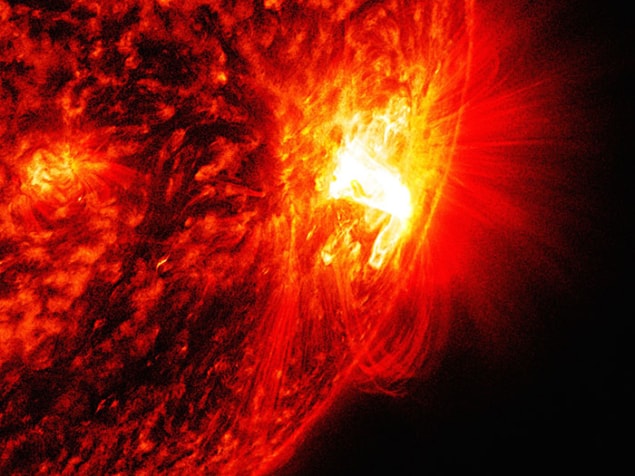
A new study of the radioactive decay of manganese-54 counters previous measurements that suggest that the rate of decay is influenced by Earth’s orbit of the Sun. Mark Silverman of Trinity College in Hartford, Connecticut, analysed decay-rate data taken over a three-year period and found no evidence for an annual variation to within one part in 104
Radioactive decay is a quantum-mechanical process whereby the probability that a nucleus will decay is a fixed value for that specific isotope. This means that for a sample containing a large number of identical nuclei, the rate at which decay events occur will fall exponentially as time progresses.
While exponential decay has been observed in the vast majority of nuclear-decay studies, several anomalies appear to have cropped up over the 10–15 years. One involves the decay rate of manganese-54, which has been reported to vary annually by researchers at Purdue University in the US. The same team has also reported drops in the decay rate that occured during solar flares. (see “The mystery of the varying nuclear decay”). One possible explanation for these anomalies is that the decay rate is affected by neutrinos emitted by the Sun – however, there is currently no known physical mechanism for this to occur.
Environmental effects
Manganese-54 is an interesting case because it decays to chromium-54 by capturing an atomic electron. The rate of electron capture in some other nuclei is known to be affected by environmental influences, and Silverman points out that it could be possible that this is what is being seen in manganese-54.
Silverman looked for variations in the manganese-54 decay rate in data acquired by scientists at the Institute for Reference Materials and Measurements (IRMM) in Geel, Belgium. Researchers at the metrology lab placed a sample of manganese-54 in an ionization chamber and measured the number of nuclear decays that occurred per unit time at several intervals over a three-year period. This corresponds to about 3.6 half-lives of the isotope and therefore a very well-defined exponential decay was observed.
While the Belgian lab’s aim was to gain a better value for the half-life of the isotope, Silverman says he was able to perform “the most stringent examination to date showing that the electron-capture decay of manganese-54 is in exquisite agreement with standard nuclear physics”.
Residual deviations
To do so, Silverman calculated the amount by which individual measurements of the decay rate – made at many different times over the three years – deviated from the rate predicted by exponential decay. Because of the random nature of the decay process, these “residual” values are not zero but have positive and negative values that occur with frequencies that form a well-defined statistical distribution centred at zero deviation. According to Silverman, the shape of this distribution is in excellent agreement with a decay rate that is constant throughout the study.
Silverman then looked for evidence that the residuals had some sort of time dependence – was the decay rate slightly lower or slightly higher at certain times of the year? Again, no evidence was found. He also found no evidence for short-term changes in the decay rate that could be related to solar activity such as solar flares. However, Silverman does admit that as the data were not gathered continuously over the three-year, some potential solar events could have been missed.
Finally, Silverman introduced fake annual variations into the data to test the efficacy of his analysis techniques. He found that his methods are sensitive to an annual modulation as tiny as one part in 104, which is about 10 times smaller than previously reported variations in the manganese-54 decay rate.
Social value
Silverman told physicsworld.com that he did his analyses because he believes it is important to test reports of apparent violations of fundamental physical laws. “It saves theorists the task of trying to account for processes that do not occur,” he says, adding “it helps remind experimentalists that most such violations are the results of instrumental artefacts rather than new laws of physics.” He also says such tests have a wider social purpose to “help demonstrate that the laws of physics are reliable, a not insignificant social point to be made at a time when much of humanity is inclined toward irrational belief in the supernatural”.
The analysis is described in European Physics Letters.



